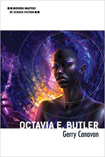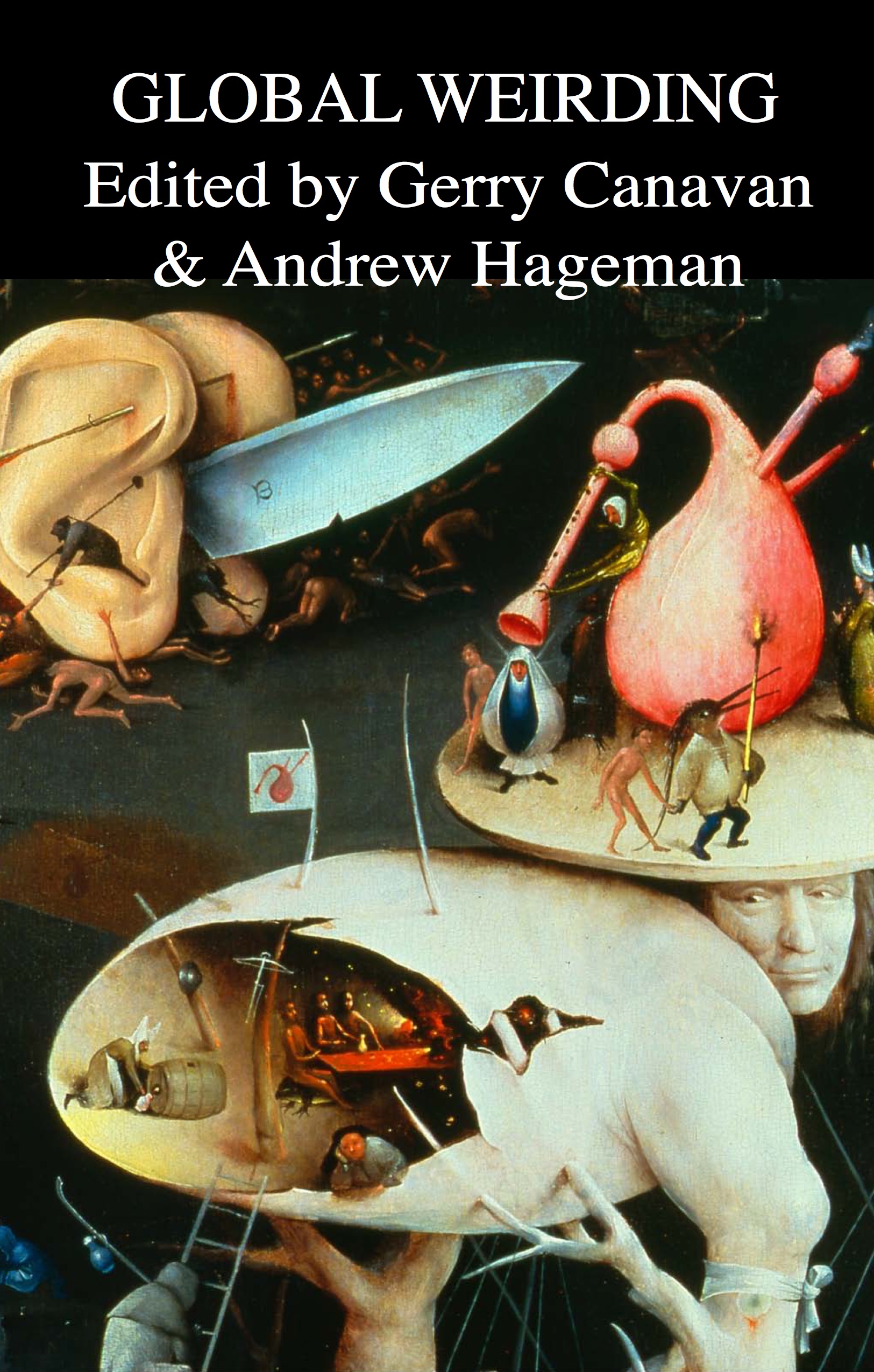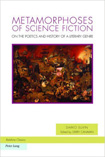‘Baltimore as World and Representation’
In a text from 1988, Fredric Jameson argues for the necessary emergence of what he calls ‘an aesthetics of cognitive mapping’: an aesthetic adequate to the highly ambitious – and he suggests ultimately impossible – task of depicting both social space in our historical moment – then described as late capitalism or postmodernity – and the totality of class relations on a global scale: what Jameson calls ‘a cartography of the absolute’. This notion of cognitive mapping builds on Kevin Lynch’s book from 1960, The Image of the City, and Jameson argues that an inability to cognitively map the contours of the world system is as debilitating politically as being unable to mentally map a city would be for a city dweller. The works that would emerge under the banner of this aesthetic would allow individual subjects and collectivities to understand their local situation in a globalised world: ‘to enable a situational representation on part of the individual subject to that vaster and properly unrepresentable totality which is the ensemble of society’s structures as a whole’(6). While the works emerging under the aesthetic of cognitive mapping would not merely be didactic or pedagogical, they would necessarily also be didactic or pedagogical. While Jameson’s text remained speculative, as he claimed that no such works had yet been produced and that he could not even imagine what their formal characteristics might be, The Wire can be understood as one the most cogent attempts at producing a work classifiable under such an aesthetic.
Crossing my radar tonight: “Baltimore as World and Representation: Cognitive Mapping and Capitalism in The Wire.” Via Vu.










Compare that, though, with Le Colonel Chabert’s old blog posts (which, sadly, she’s taken down) that viewed The Wire as little more than naturalist Southern racism, replete with stereotypes of the good black (law-abiding, patiently suffering) and the bad black (uppity).
Alex
January 7, 2010 at 11:23 am
How do characters like Omar or Bodie fit into that classification? It seems much too simple.
gerrycanavan
January 7, 2010 at 11:26 am
Too simple? How so? these two are entirely obvious and it is indeed as simple as can be. both are obedient – disposed to obedience – but gone astray and punished. bodie is scrupulously obedient but to wicked (black) masters (one merely uppity, one diabolical); omar is scrupulously obedient but only to the establishment and its hierarchy in general and in the abstract, as a code.
Simon executes them both on screen for the audience’s satisfaction.
And notice as well both Omar and Bodie are equipped with grandmothers who figure their potential righteousness and moral resource from which they have strayed/which they betrayed and who are stereotypes right out of minstrel tradition – omar’s grandmother and her sunday go to meetin’ hat, bodie’s beulah-like grandmother imperturbably folding laundry as cops invade her home guns drawn, then confiding to the white one (the kinder one) about her grandson’s unfortunate “anger”. Not only are the grandfilial relations clichés of the oldest kind, the violence inflicted on both elderly black women is played as comedy of a certain very traditional southern racist sort, and as if out of an utterly different genre than the gritty urban naturalism often invoked to justify the lavishly indulged depictions of black folks inflicting and suffering violence.
chabert
March 10, 2010 at 8:35 pm
Thanks for coming by to answer. You make a good case but I’m still not there. I’m not sure, for instance, what it means to describe Omar’s vigilantism as a “scrupulous obedience” to establishment hierarchy — this seems oxymoronic — nor do I agree that either of the two executions is staged “for the audience’s satisfaction.” Satisfaction is not what one feels when one watches these things happen.
gerrycanavan
March 11, 2010 at 1:30 am
“describe Omar’s vigilantism as a “scrupulous obedience” to establishment hierarchy”
he observes the hierarchy of humanity laid down by the establishment – there are “citizens” and combattants. he is so ostentatious about his scruples in this regard – a man’s gotta have a code – that even the most inattentive viewers seem to notice this trait.
“Satisfaction is not what one feels when one watches these things happen.”
okay okay okay….we are leaving the era of the subversive tv audience and entering the age of martyred tv audience?
I guess I’m insensitive, but it makes me laugh.
anyway, thanks for the reply.
chabert
March 11, 2010 at 6:32 am
he observes the hierarchy of humanity laid down by the establishment – there are “citizens” and combattants.
Among other things he doesn’t observe this hierarchy in his own person; by definition a vigilante is someone whose violence is not authorized by establishment forces. All of Omar’s effectivity — and he makes a lot of things happen — derives from his willingness to reject society’s “proper” chain of command and the accordant proper procedures, first and foremost the state’s monopoly on legitimate violence. (And of course he’s “disobedient” to establishment order in the more personal sphere as well: he is gay.) I suppose your claim is that he’s “disposed to obedience” except for one or two things like these which turn him into the “bad black” we must see punished — but neither of these breaks with authority maps cleanly onto the “bad black” stereotype you’re talking about, and again I just can’t agree that the story is framed in such a way that seeing Omar’s “punishment” for his transgressions brings the audience pleasure or satisfaction. I wouldn’t even agree that Omar’s death is framed as punishment for his supposed disobedience. It just seems random; unmotivated and uncaused.
I’d never claim that David Simon escapes racist stereotypes entirely, or even mostly, but if even a multivalent character like Omar must be reduced to an easy “good black / bad black” binarism the problem may lie less in the show itself and more in the leveling power of our own interpretive approach. There is something more here; The Wire is not reducible to naturalist racism. Or so it seems to me.
gerrycanavan
March 11, 2010 at 9:38 am
Well i think it is not a question mainly of stereotypes or your “easy binaryism” of good/bad, or your even easier binarism of law/outlaw – vigilante is “by definition” opposed to the established order? whose definition? is there really no complicity, no grey area, it’s simply that easy and rigid a binarism? everything is either sanctioned or criminal? so that being gay (and therefore staying away from white women) is some kind of “disobedience”? – rather what an analysis of the Wire requires is a recognition of the whole, of a vision of “decline of the American empire” associated with challengesd to white supremacy and patriarchy. I think for example there’s no point in trying to consider Omar in isolation from the whole programme; characters don’t mean that way, but in relations. And when you get to the point of simply declaring the death of a major character – a scene that is elaborately pomo and emphatic – simply meaningless and uninterpretable then what’s the point? (Did you see how Bab Walters went at Vanessa Williams over The Blind Siden btw?) It seems to me there are a lot of fans of the Wire who are doing fan club glorification in the guise of criticism and who are amazingly, almost comically blind to its rather blatant traditional reactionary features. A similar piece ideologically I’d say was the celebrated indie _Half Nelson_, whose hero is a Clinton, a debased and enfeebled white saviour who has become decadent from mingling, in a world seemingly ruled by black matriarchs and the worse for it. But that film was discussable in public; even people who liked it could tolerate an investigation into its use of and production of race; with the Wire the fans are almost terroristic in their defence of this thing from any recognition of its exploitation and production of racial discourse at all; there are some impressive contortions and every evasive rhetorical manoeuvre is deployed to defend the object as benevolent and worthy. I would say your remark about not “mapping cleanly onto” is one such move, as it implies there exists something to map onto etc.. and Omar fails this test of clealy mapping and therefore there is no ideological production of race in which that character is involved. The assumptions are densely packed there. When was this test established and what is it exactly? The sudden introduction of this vague experiement with matching character to mold seems like a defence against something no one ever did or would assert serving as substitute for a rebuttal to the actual contentions here. I’m you view types as I do, as everyone does, as abstractions derived from exemplars, not models or sets of specs to which exemplars must reduce or be considered extra-typical, atypical, non typical. All execmplars exceed type – judy holiday roles and the swedish bikini team of beer ads all “exceed” dumb blonde in the sense that they are more than a set of features common to them all. Every Clint Eastwood role exceeds the type “clint eastwood role”, and even the original uncle tom fails to “map cleanly onto” the uncle tom type. So is Omar a fictional character, performed by an actor in a tv series? If so he must necessarily fail to “map cleanly onto” any of the types to which he belongs. This does not in any way rebut my contentions about his obedience and uppitiness and how they participate in a tradition, and its very possible what i’ve said cannot be understood by anyone who has only seen Omar’s scenes and will only consider Omar as an action figure, a static and isolated signifier, against some imagined prototype, refusing all knowledge of the rest of the characters, all the black politicians, narcotraffickers, cops, and the narrative, the whole text in which the Omar character is an element and which produces that element. Not to say a rebuttal is impossible, but that Omar is a fictional character on a tv show, with lines and action, and not less, is not in itself a convincing one, I would say.
chabert
March 11, 2010 at 1:00 pm
In talking about “mapping cleanly onto” I was responding to “Too simple? How so? these two are entirely obvious and it is indeed as simple as can be.” I don’t agree it’s as simple as can be.
But perhaps we’ve both having arguments with people who aren’t actually in the room. I really don’t understand myself to be participating in “fan club glorification in the guise of criticism,” and, as I say above, I’d never claim that David Simon escapes racist stereotyping entirely or even mostly. I’m aware of racist traditions and how The Wire plays at times into these things in various ways.
But what troubles me is the apparent assertion (perhaps a misreading of your actual position) that the show is only this; at the risk of exposing again my fanboyish naivete I think there’s more to be said about The Wire than just this one thing. That’s where we started: Alex (summarizing you) wrote The Wire is “little more than naturalist Southern racism.” Your ongoing insistence that Omar is but a one-dimensional stereotype of a sort we’ve all seen a thousand times before seems to affirm that this is indeed your take. Well, I watched all sixty hours too and I think the show (whatever else one might have to say about it, good and bad) exceeds this sort of reduction. Other people may be doing fan club criticism, but this is not that.
gerrycanavan
March 11, 2010 at 1:44 pm
yeah sorry, didn’t mean you doing the fan thing, just that this kind of statement – Omar is a character not a set of specs – is part of that now standard case. Since it’s nothing anyone would dispute. I never said Omar was one-dimensional. I always stressed the opposite, that Omar is a composite of many types and figures, referencing numerous fictional and non fictional men including MacHeath and Malcolm X, which has to be too obvious even to mention. He wears a duster, whistles his own theme music, and is fashioned largely of postmodern copies of copies – his tete a tete with Mouzone across the dark alley for example is a actually mimicry of a satire (Hollywood Shuffle) of Dirty Harry, for example; his death scene evokes both Little Big Man and the Godfather. The character is very appealing; certainly one of the great performances on television ever, etc etc.. But I don’t see how recognising the production of race by the programme is “reduction”, it would seem rather denying that element is a “reduction”, reducing the programme by precisely that element. Just as if one insisted say the entire show was exteriors, you would be reducing it by all the interiors.
Anyway, here are some youtubers reactions to Omar’s on screen death:
chalkup8
The young – ins would always call Omar Omar and get out of his way,yet he was killed by one.I did not see that coming – Great entertainment !!
fav characters in no order
Bunk
Omar
Avon
marlo
Stringer
prop Joe
chechegetheyayo
that was the point, in the life he choose u can be killed by anyone at any time
penvon
that cock sucker deserved that shot to the head.
Kryptonian250
WTF?! Omar went up against Marlo and he gets killed by a little kid!
A man of his stature shoulda gone out blazing!
bavlondon
The street is always the street. But it’s ok, Michael becomes the new Omar!
xpose85
wow they made omar go out like a little bitch…..im only on season 4 but come on, the dude goes up againest barksdale, stringer, marlo and a fuckin kid kills him? soooo gay
errbarkkill
That was gutta. They getting started early. It’s a shame.
Isn’t it clear some people like the show and enjoy this scene too? Anyway the scary thing is the last one and it’s not that rare:
tp9337
yall all talkin bout why this and why that and oh it was written so well……yo bruh this is real life, this scene happens about 250 times a year in a city like baltimore….better yet im not even from bmore im from louisiana and u can say the same for the N.O. or Baton rouge or any other city, its jus real life mane
Of course nothing like this has ever happened in the history of Baltimore. No child Kennard’s age (13) has ever committed a crime like this. Not once. Not ever. It’s a racist fantasy. But alas this kind of thing presented as on the same level of realism as Omar’s preference for Newports and Honey Nut Cheerios, seamlessly woven into a programme making a point of its unvarnished verisimilitude (even when the characters are obviously being used as sock puppets for authorial wit and viewpoints ) can fool people. Admittedly some better evidence than youtube would be needed to really see how this show effects people, and no one is ever alone with this show. But its obviously pretty dominated by images of violent black men, and black life is treated as cheap, etc.. Ziggy and Prez kill and the show is very attentive to their anguish and the experience of having taken a life. Nothing like this is offered for any of the black murderers, not even the black children depicted as murderers. To remark on this is not to reduce the programme to Ziggy’s and Prez’ suffering from the experience of killing, not to say the show is only about Ziggy’s and Prez’ regrets and anguish, but to simply notice these as elements, among others, in the text.
chabert
March 11, 2010 at 5:15 pm
Checking YouTube comments is like opening up the gate to hell. You may prove your point but the cost is just too high.
I’m doing that panel on the show at MLA 2011 and one of the things that’s important in the papers we chose is exactly this question: why do people with no relevant experience nevertheless insist The Wire is *realistic*? As you say, on what basis can they possibly be making this evaluation? Putting aside the camerawork and similar formal considerations, the primary factor is The Wire‘s adherence to their own stereotypes about what things “must be like.”
gerrycanavan
March 11, 2010 at 7:02 pm
sorry about the youtube –
re: “realistic” – There were I recall some good articles about Bonfire of the Vanities (the novel, not movie) which explained the same thing the Wire does with the thick superficial detail. The brand names, place names, the jargon filled speechy speech, undergirds the absurdities. “chicken mcnuggets”, but also the models of nail guns, “Prairie Home Companion” and “Muthafucka” guarantee the reality and truth of everything around them.
chabert
March 12, 2010 at 7:41 am
there’s a very stagey scene in the episode slapstick where McNulty has a long speech where he calculates the members of the police force doing different things…700 this that this, 1500 the other…it’s very like Tom Wolfe’s technique in Bonfire. In the same episode, Slim Charles has another stagey speech to rebuke the shooters who broke the Sunday truce to get Omar. Slim Charles is explaining what a church crown is, and holding Omar’s grandmother’s ruined one. He is explaining what “a bona fide colored lady” is. The speech (like D’Angelo’s chess lesson and McNulty’s police survey) is overtly for the audience, really not the characters who are staged as listeners, through Slim Charles, from David Simon. it is David Simon regaling the audience, exhibiting his superficial learning, his expertise, this reporter/ethnographers “knowledge of the enviornment”. This technique is used in a very distilled version in the J. Peterman catalogue. Barthes says something à propos this reality effect in the Fashion System.
chabert
March 12, 2010 at 8:10 am
very good comparison for the Wire –
http://readingroom.blogs.nytimes.com/tag/the-bonfire-of-the-vanities/
chabert
March 12, 2010 at 10:35 am